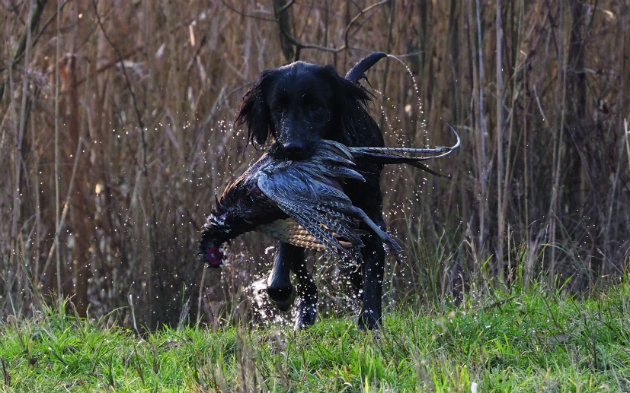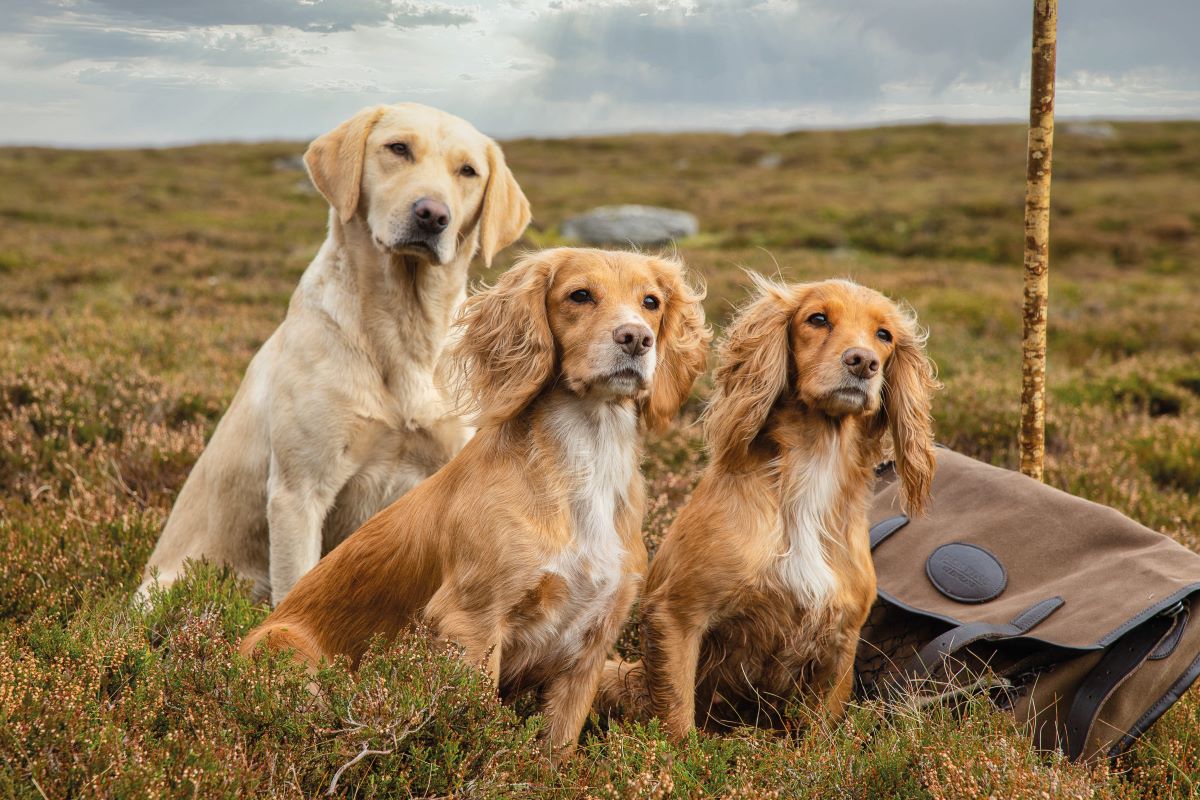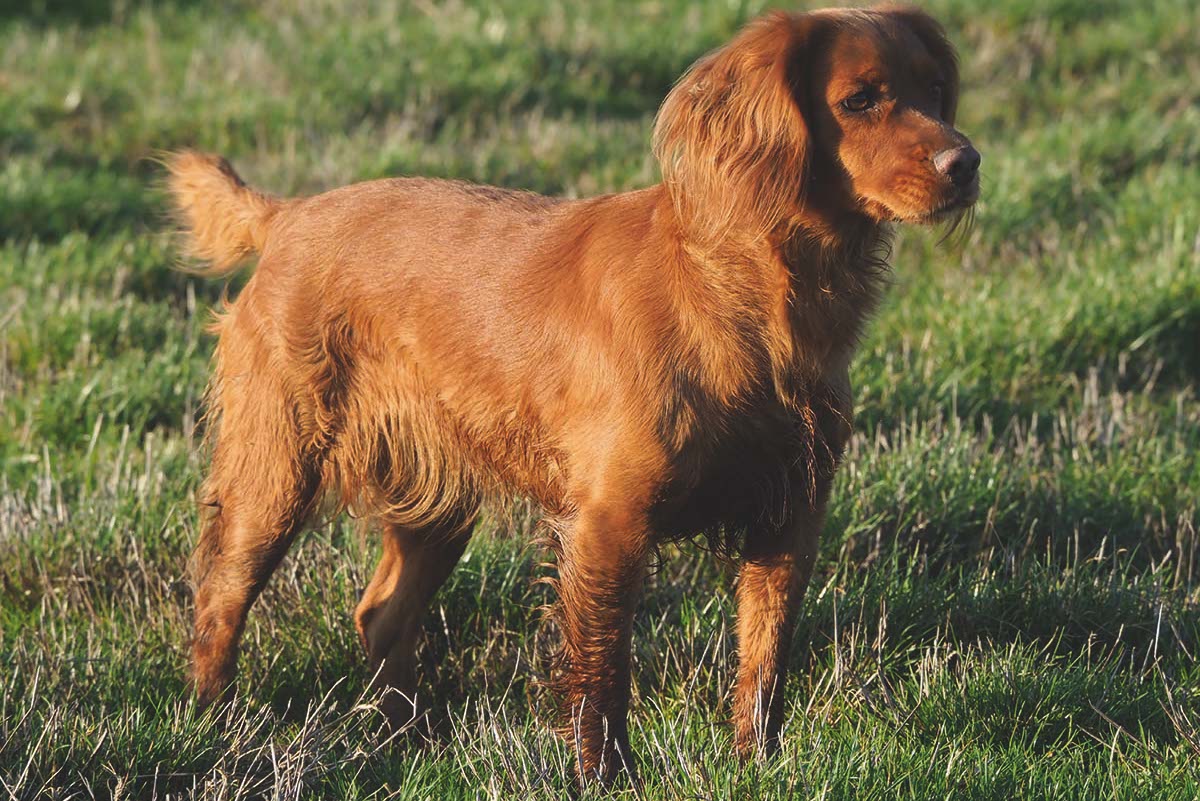Why is the flatcoated retriever so rarely seen in the field now?
The flatcoated retriever was once the celebrated dog of Edwardian England - so why is it so seldom seen now, asks David Tomlinson

Flatcoats make excellent shooting dogs, but they also excel in the show ring
Last month I dined at Holkham’s Victoria hotel in North Norfolk. Holkham has long been one of the premier sporting estates in England, covering 25,000 acres of saltings, marsh and farmland; its gamekeepers still wear their traditional bowler hats. On the back of the Victoria’s menu was a picture of a group of Holkham keepers, wearing their bowlers, photographed in 1909. With them is a flatcoated retriever.
A popular breed in the show ring
Long celebrated as the gundog of Edwardian England, the flatcoat was then about to be eclipsed by the ubiquitous Labrador. according to The Best of the Best: A History of the IGL Retriever Championship 1909-2011 by Graham Cox and Gareth Davies: “1908 marks the first occasion when a trial had more Labradors than flatcoats running.” Today, the flatcoat might not be a rarity in the shooting field, but it is a scarce sight. It does, however, remain a popular breed in the show ring: last year no fewer than 404 were entered for Crufts, compared with just 225 English springers.
I was reminded of how good flatcoats can be as shooting dogs when I spent
a day picking up with Neil Gilbert and his two flatcoat bitches, seven-year-old Kola and her daughter Sinte, aged three. Neil is arguably a typical flatcoat owner. A keen shooting man, he started with Labradors and did a little trialling with them. He then acquired a working cocker that he loved before deciding to try a flatcoat. He was well aware that the breed has a predisposition to cancer — several of my friends with flatcoats have lost dogs to this horrible disease — so he did his homework carefully, looking for genuine working dogs with good survival rates.

Dog owners Neil Gilbert describes himself as a “flatcoat convert”
He ended up buying Kola from Fiona Joint, one of the leading advocates of working flatcoats. Neil had established that dogs from her Hertfordshire-based Hullabaloo kennel enjoyed long lives. It was clear to Neil that it would be difficult to find a more responsible breeder, or one doing more in trying to secure the future of the flatcoat as a working breed.
Training a flatcoat proved to be a delight
Kola came as an eight-week-old puppy, and Neil undertook her training. “Training a flat coated retriever proved to be a delight,” he told me. “However, I do believe that they need a softer approach than a typical Labrador. They are sensitive to your voice and body posture. To get the best from one it’s essential to be patient, to be gentle in your methods and to tune into their canine psychology. It’s also important to work hard to develop eye contact.
“Training can take a little longer than with a Labrador — flatcoat enthusiasts always say that they are slower to mature. However, if you get it right you will end up with a great shooting dog that really will turn heads in the field, or even when out walking.”
Neil added: “I’m now a flatcoat convert and would encourage other people to consider the breed for several reasons. First, a well-trained flatcoat is very stylish in the field, a fact often commented upon by Guns who are interested in seeing dogs working.
“Second, they have an impressive work rate, with a great deal of drive and determination. I have found mine to be bold when entering thick cover and water, while they will push through brambles like a spaniel.
“Third, they are great markers, a real asset with a picking-up dog. Many Labrador handlers fail to appreciate that the flatcoat works air scent, rather than ground scent, so a nose in the air doesn’t mean that the dog isn’t working. I have found my dogs to be quiet when waiting at the peg, while they are also affectionate and want to be with you. Lastly, they are wonderfully elegant jumpers.”

If you get the training right, you will end up with a great shooting dog that will really turn heads in the field
I was given a great demonstration of flatcoat jumping skills when Sinte was sent to retrieve a pigeon that had fallen in a wood behind where we were standing. She cleared the 4ft fence with inches to spare, making a tricky jump look easy. Neil, incidentally, bred Sinte using a sire from David Wheeler’s Ripplethorpe kennel in Norfolk. Neil visited the kennel to see the proposed sire, and was greatly encouraged also to see the dog’s parents and grandparents. “It was clear from
this that David was another responsible breeder,” Neil told me.
An impressive blind retrieve
I enjoyed my day watching the flatcoats at work, and can certainly vouch for their hunting skills and gentle retrieving. Particularly impressive was a retrieve of a cock pheasant runner from the edge of a small lake. I hadn’t marked the bird at all, but Sinte clearly had, and she performed the sort of retrieve that would make any picker-up proud.
Later, she made an equally impressive blind retrieve of another cock that had fallen on an island in the lake. As Neil pointed out, “she stopped to whistle nicely and responded accurately to my directional hand signals to go back”. She did indeed.
Neil’s dogs enjoy a varied career picking-up, as peg dogs, wildfowling and even an annual day on the grouse moors. The fact that they can excel in many different disciplines speaks highly of their overall ability. If you fancy a retriever with a difference, then the flatcoat is certainly a breed to consider, but do make sure that your puppy comes from healthy stock.








